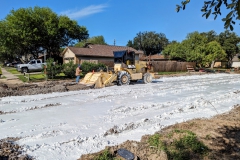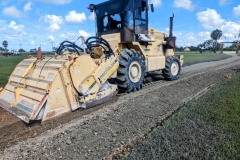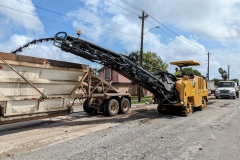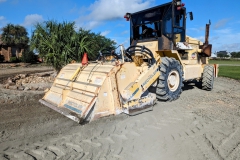Road Rehabilitation
What is the process of road rehabilitation?
The first step in asphalt road rehabilitation is assessing the condition of the existing pavement. This evaluation helps identify areas that require repair or replacement. Common issues include cracks, potholes, uneven surfaces, and worn-out sections.
Once the assessment is complete, the damaged areas are typically repaired or patched. This may involve removing and replacing sections of the deteriorated pavement, ensuring a stable base for the new asphalt layer.
In some cases, a Full Depth Repair (FDR) may be required to ensure structural integrity. This process involves removing and replacing the existing surface plus 6-8" of subgrade and placing new road base. An alternative to this is to stabilize the existing subgrade with dry cement. The stabilizing option is usually a more cost effective alternate while also expediting construction time.
Next, the road is prepared for the application of the new asphalt surface. This typically involves cleaning the road, and removing debris and loose materials. If necessary, the road may also undergo leveling or milling to create a smooth and uniform surface.
After the preparation stage, a layer of hot asphalt mix, also known as asphalt overlay, is applied. The asphalt road is paved using specialized equipment and compacted to ensure proper density and stability.
Once the asphalt is laid, it is allowed to cool and harden, after which traffic can resume. The newly paved road offers improved driving conditions, enhanced durability, and increased skid resistance. Regular maintenance and periodic inspections are crucial to extending the lifespan of the rehabilitated asphalt road.
Overall, road rehabilitation with asphalt paving plays a vital role in enhancing transportation infrastructure, improving road safety, and providing a smoother and more comfortable driving experience for motorists.






